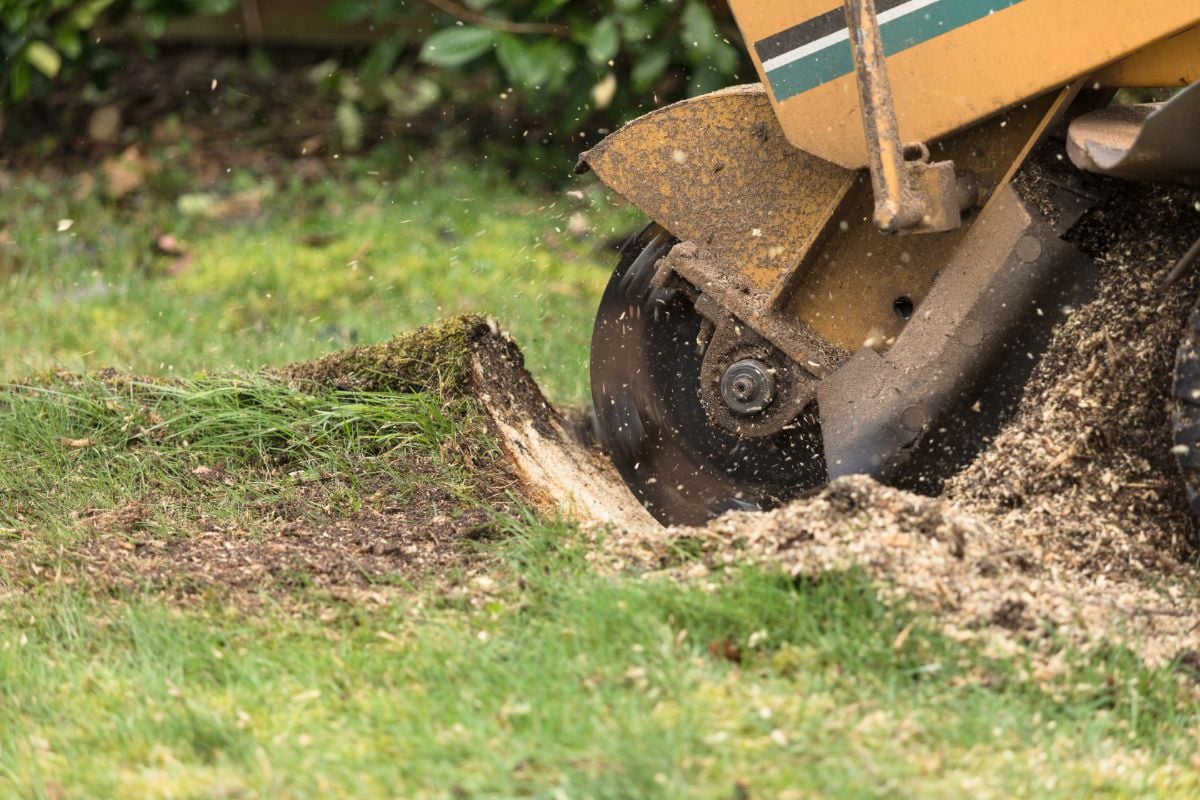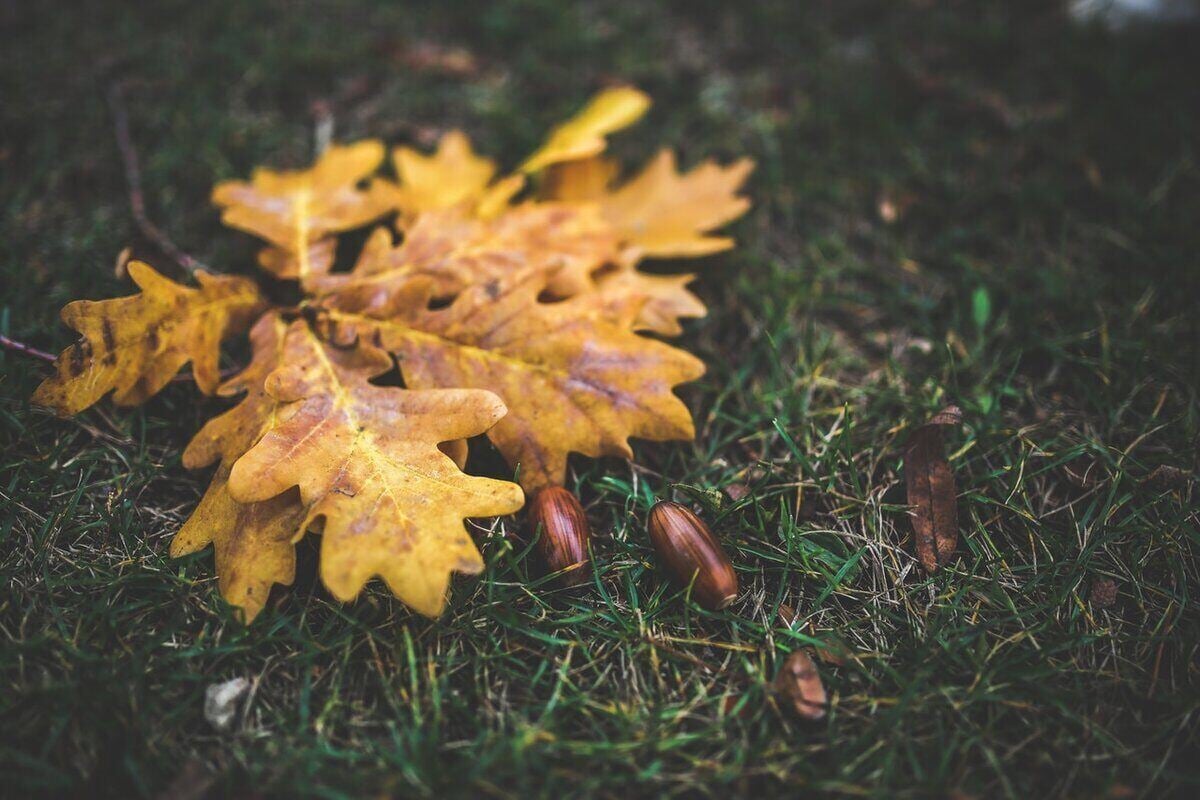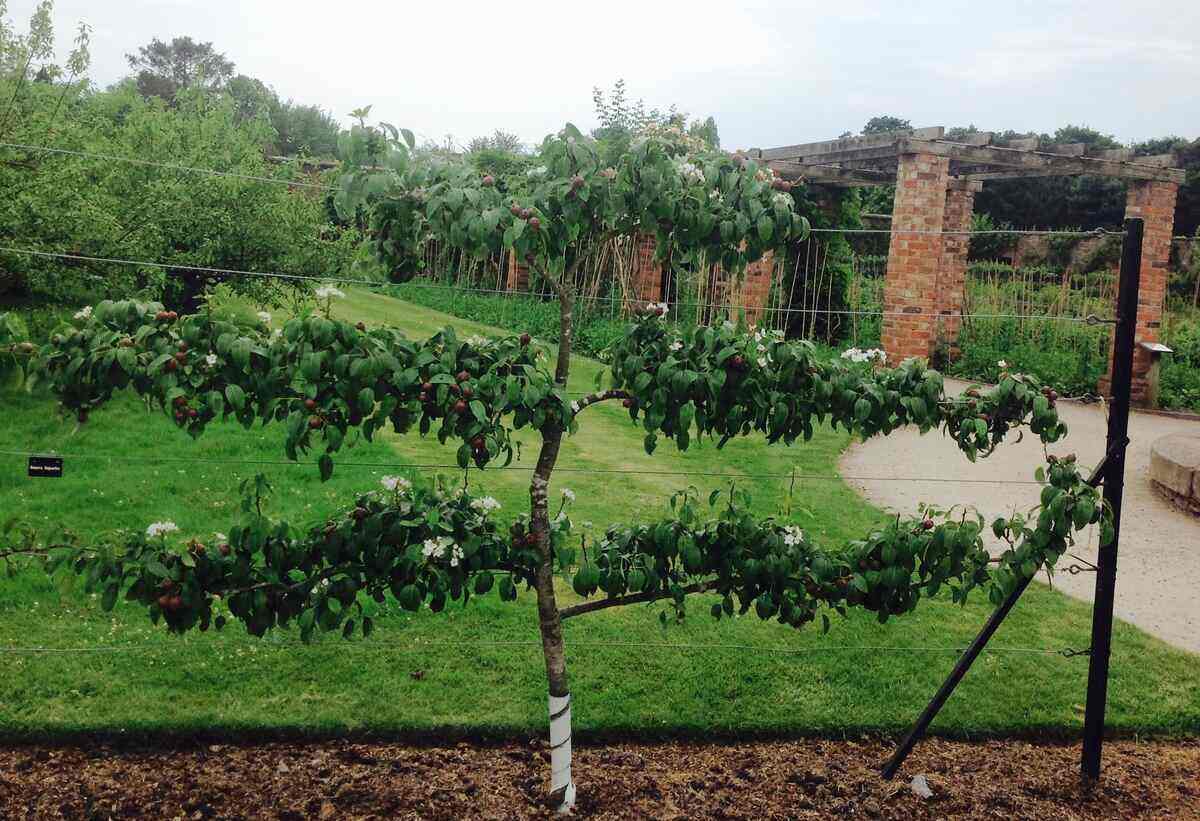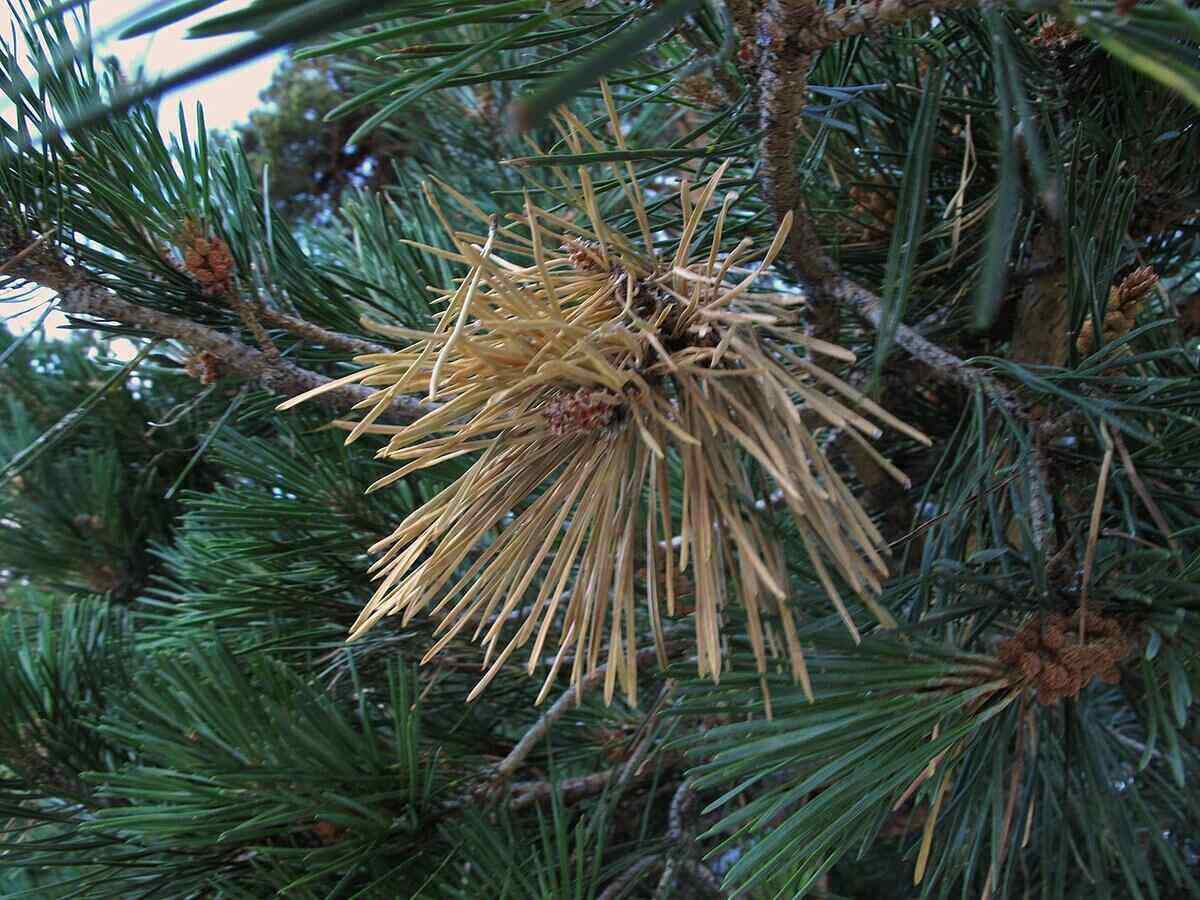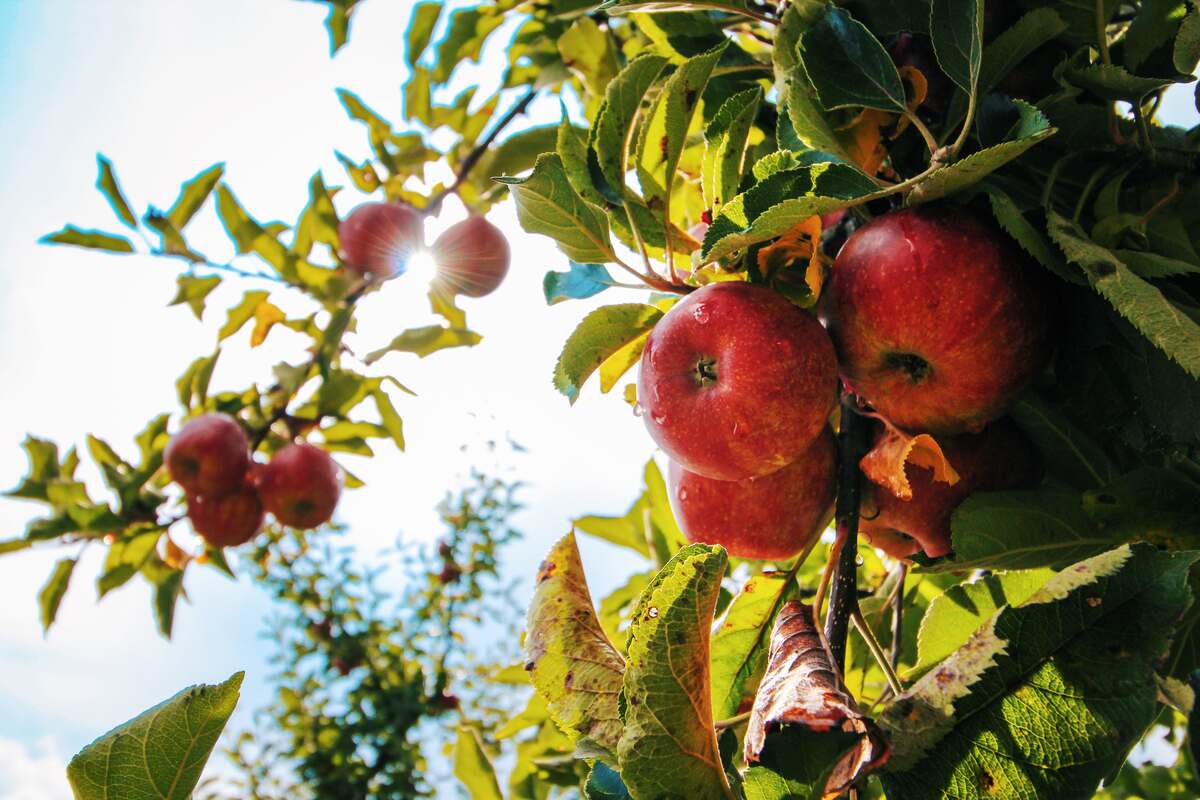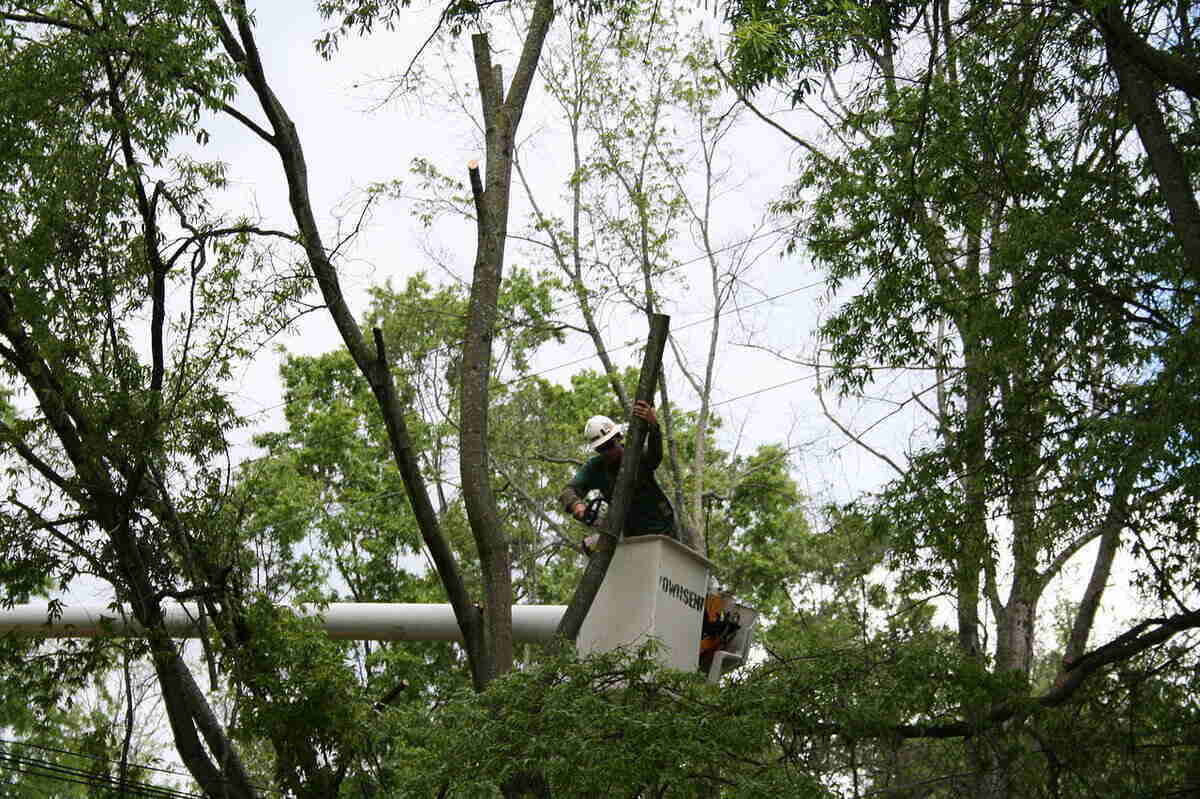
If done properly, tree trimming helps maintain the long-term beauty of your plant. Trimming seems like an easy task at first glance, but if done poorly, it can cause irreversible damage. Learn about the 8 common tree trimming mistakes many homeowners – and even so-called professionals – make.
8 Tree Trimming Mistakes to Avoid
1. Over Trimming
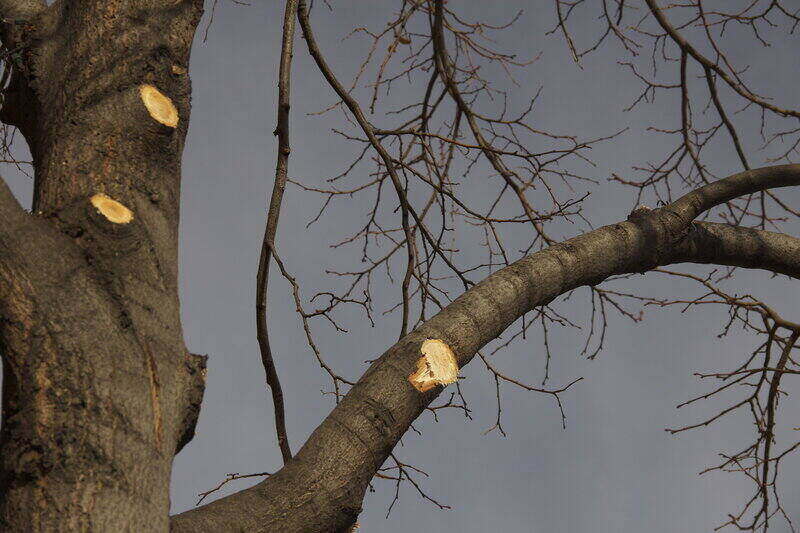
It is especially important to avoid over-pruning during the growing season, but over-pruning any time of year will cause stress to your tree and make it more vulnerable to disease. Removing branches will impact future growth and seriously hinder the tree’s ability to grow, heal, absorb sunlight and produce food. It also can lead to limb death, which is a hazard since dead branches are at risk of falling and damaging vehicles, homes, and people.
A common mistake made by those unfamiliar with tree pruning is to take off too much. Trimming can be tricky, and it often takes a trained eye to judge how much to remove. You can always take off more, but you can’t put the cut branches back on the tree, so to avoid over-pruning, take off only a little at a time.
One too many poor cuts can kill your tree since it creates entry points for wood-decaying fungi to begin rotting your trees from the inside out. Each cut, even perfect ones by an experienced arborist, are wounds that stress a tree. Pruning a tree is a long-term practice that is done intermittently and is determined by the tree’s size, age, and overall health.
2. Tree Topping
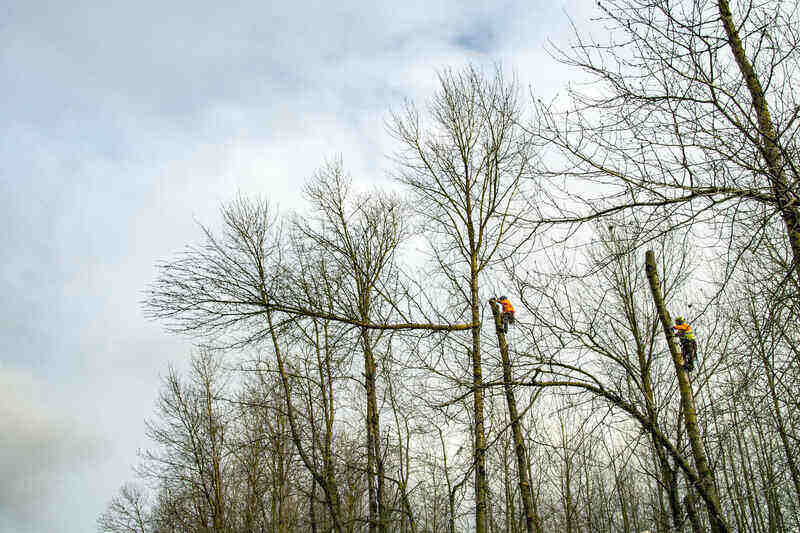
/ Flickr / CC BY 2.0
Cutting off the top of a tree, or “topping” a tree, is a practice that causes undue stress to trees and can make them more likely to topple.
Topping involves cutting a tree’s main trunk at a random point below its apex to reduce the height of the tree. Homeowners will top a tree when it grows out of its space, which is why it’s so important to consider the eventual height of the mature tree before you plant it.
Tree topping is one of the worst things you can do to a tree. But why?
The trunk is the most important part of a tree and indiscriminately removing branches harms the tree’s health. This will result in branch decay, and it can inevitably lead to the death of your tree.
When a tree is topped, it will usually respond by sprouting a lot of spindly, weakly suckering branches that are very susceptible to breaking and will have to be cut off to maintain control of the tree’s size and appearance.
3. Bad Cuts
Every cut is a wound to the tree, and a proper pruning cut minimizes the damage, allowing the tree to heal quickly. Cuts need to be sharp, precise, and well-placed.
You can tell if your trees have been improperly cut if you see any of these bad pruning cuts:
- Flush cuts cut too close to the trunk and remove the branch collar (the slightly enlarged area around the base of a branch) and prevent the tree from sealing over the cut with a callus.
- Stub cuts cut too far from the trunk. If you can hang something off the end of the cut branch, it’s a stub. A stub cut leaves too much of a dead branch on the tree, which will decay into the trunk.
- Heading cuts take off the end of a branch at a random point, stimulating the tree to put out many weak branches at the cut end and leaving the tree vulnerable to pests and diseases.
4. Just Trimming Any Branch
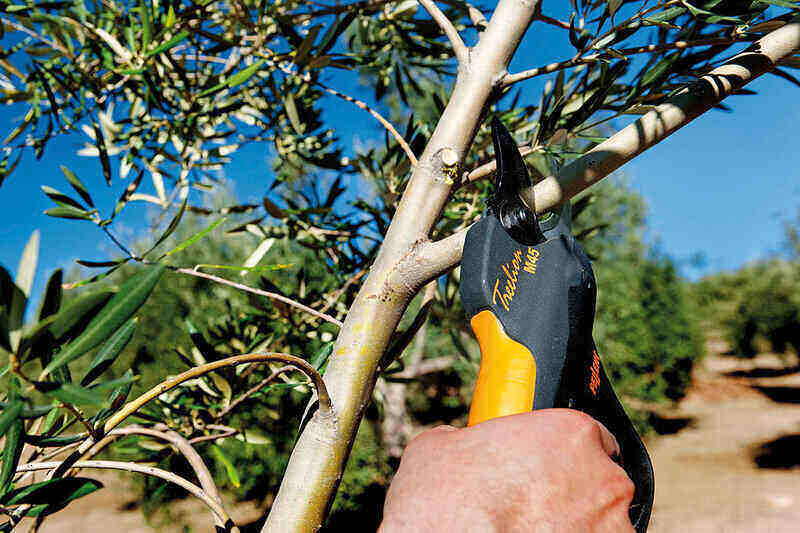
When choosing a limb or a branch to trim, you should be knowledgeable about the location of the branch, exactly how much to trim, and the angle of the cut. If you aren’t confident about any of these, you should contact an arborist or a professional tree care service. You should only trim or prune:
- Dead or dying branches
- Branches that grow inward or down
- Suckers
You can unintentionally damage the tree’s health by trimming the wrong branch. Cutting the wrong limb or branch in the wrong place can limit the tree’s ability to grow and also can leave it vulnerable to infection or disease.
5. Pruning Large Branches
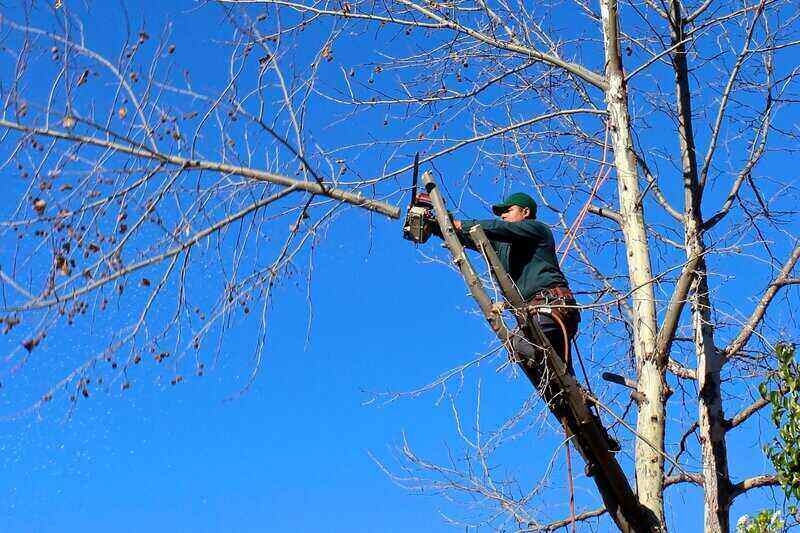
Pruning large, thick tree branches can create wounds too big for the tree to heal and make the tree unbalanced. It’s better to take off a large diameter branch by cutting it back to the trunk so the branch collar can seal the wound.
If you’re a homeowner planning to take on some DIY tree trimming, then you may want to think twice about removing large branches on your own. There are plenty of safety and liability issues when you climb into a tree or up a ladder with sharp, heavy tools. Trying to cut off large branches can lead to property damage, injuries, and even death.
6. Lion Tailing
Trees with thin, patchy canopies, lots of visible interior branches, and foliage growing only at the ends are most likely a victim of “lion tailing.” Lion tailing involves removing all of the lower branches and leaving just the ones at the top, making it look like a tuft on a lion’s tail.
Lion tailing is not recommended because it creates a future hazard tree by unevenly redistributing crown weight to the ends of branches. Lion tailing will stimulate stress-response leaves along the branches and trunk, depleting its energy reserves to counteract the damage to its branches.
It removes too much foliage that the tree needs for photosynthesis, leaving the tree’s crown open to damage from the wind and sun. Trees can endure weather, but a tree that has been lion tailed has lost its protective, flexible form and can be damaged more easily in winter.
7. Using the Wrong Tools
Failing to use the right tree trimming tools can produce a poor result or create serious injury to yourself or your tree. You shouldn’t try to substitute If you don’t own the proper tools.
If your tools are blunt or old, you shouldn’t use them. Pruning and trimming with unsharpened, dull tools can create rough cuts that rip and shred the bark, causing larger wounds that significantly damage the tree.
8. Trimming at the Wrong Time
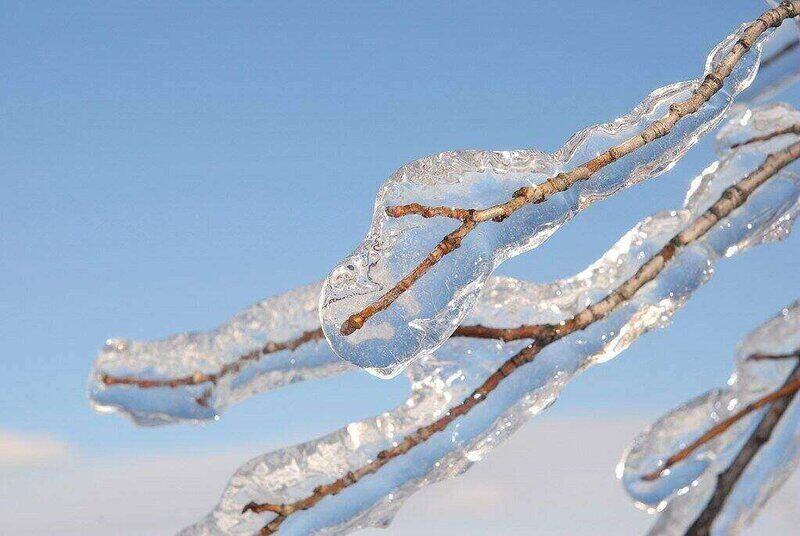
There are certain times of the year when tree trimming is not advisable. Bad weather can make precise pruning and properly handling equipment more difficult. Also, when a tree is heavily pruned during spring and late summer, there is a risk of removing too much and starving the tree.
Droughts often occur in summer, so a tree already stressed from over-pruning will be less resilient to harsh weather and drought conditions. Removing too many branches can expose the bark to the sun and create sunscald. You should only prune trees that produce heavy sap after springtime since trimming during spring can cause the bark to become stained with sap and attract pests.
Why It’s Important to Properly Trim a Tree
There are many reasons why trimming a tree is important.
- Trimming removes dead and dying branches, allowing room for new growth.
- With proper pruning, a tree can grow into a form that is ideal for the structure of the tree and helps reduce the risk of falling branches.
- A properly trimmed tree will not have compromising branches and unbalanced weight distribution.
When Is the Best Time of Year to Trim a Tree?
Most trees benefit from pruning in mid to late winter, since most are dormant from November through March.
These benefits include:
- Pruning during dormancy encourages new growth in warm weather.
- Trees are less susceptible to insects or disease in the colder months.
- The loss of leaves in autumn makes it easy to identify the branches that need to be trimmed.
FAQ About Tree Trimming
How much of a tree can you trim?
While some plants need more trimming than others, in general, you shouldn’t trim more than 15% to 20% of a tree’s canopy.
It’s impossible to fix damage from over-trimming, but making sure your trees have enough water and fertilization can help support your tree.
Pruning is used to remove unnecessary branches, while trimming promotes healthy growth. Both are done at different frequencies and use different equipment.
For pruning, shears are typically used, while a saw is used for thick branches. For trimming, shears, trimmers, and saws are used.
Pruning is done less frequently than trimming, as it usually only needs to be done every two or three years while trimming is done annually or more frequently, depending on the age and species of the tree.
When to Hire a Tree Care Pro
If you’re not confident in your ability to safely trim your trees or would rather spend your time doing things you enjoy, then you might be happier hiring a reliable tree care expert.
If you need an experienced tree service to handle all of your tree, shrub, and lawn maintenance needs, check out Lawnstarter’s extensive list of landscaping contractors in your area.
Main Photo Credit: Ildar Sagdejev / Wikimedia Commons / CC BY-SA 3.0
